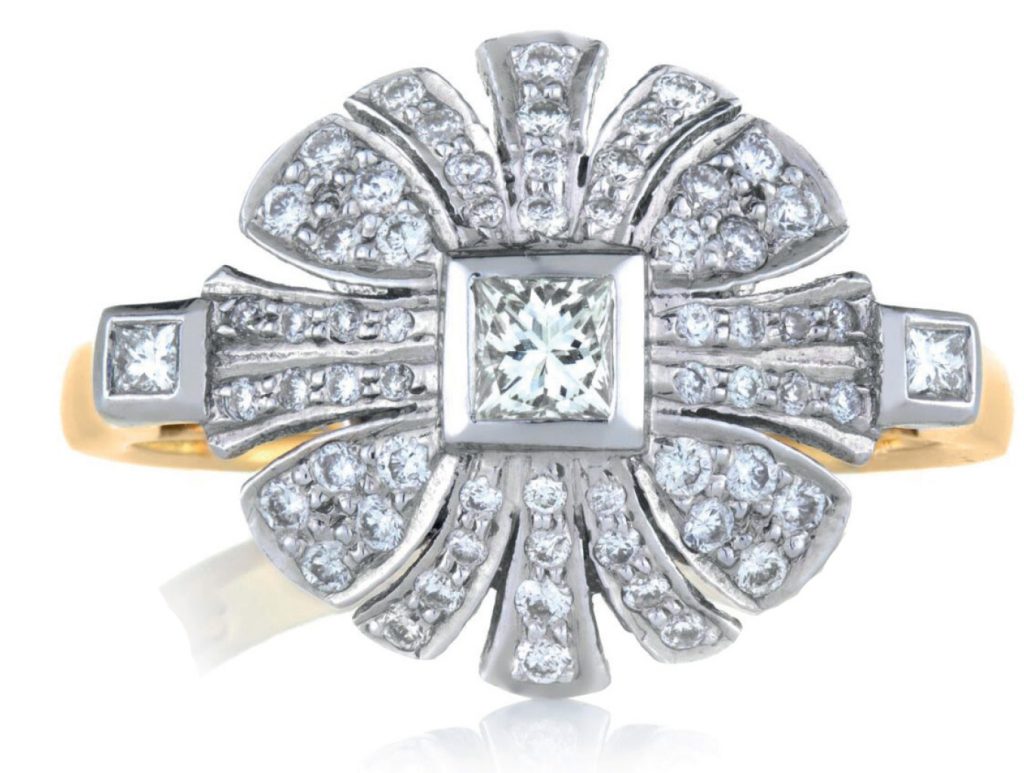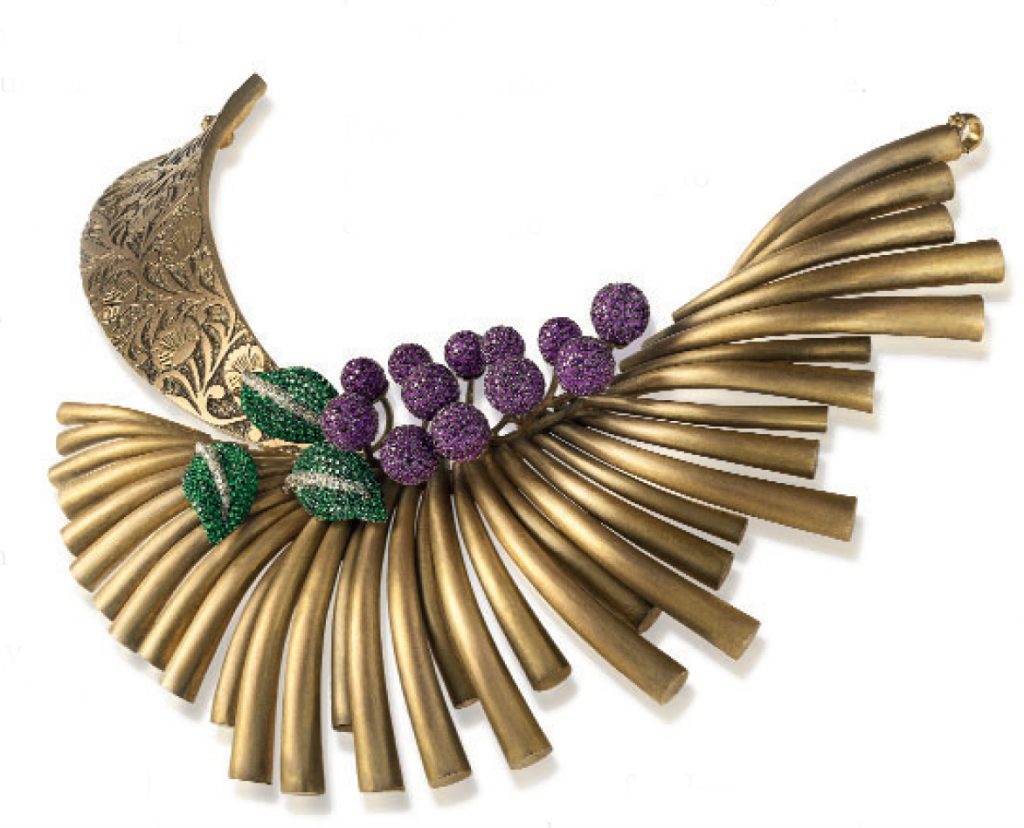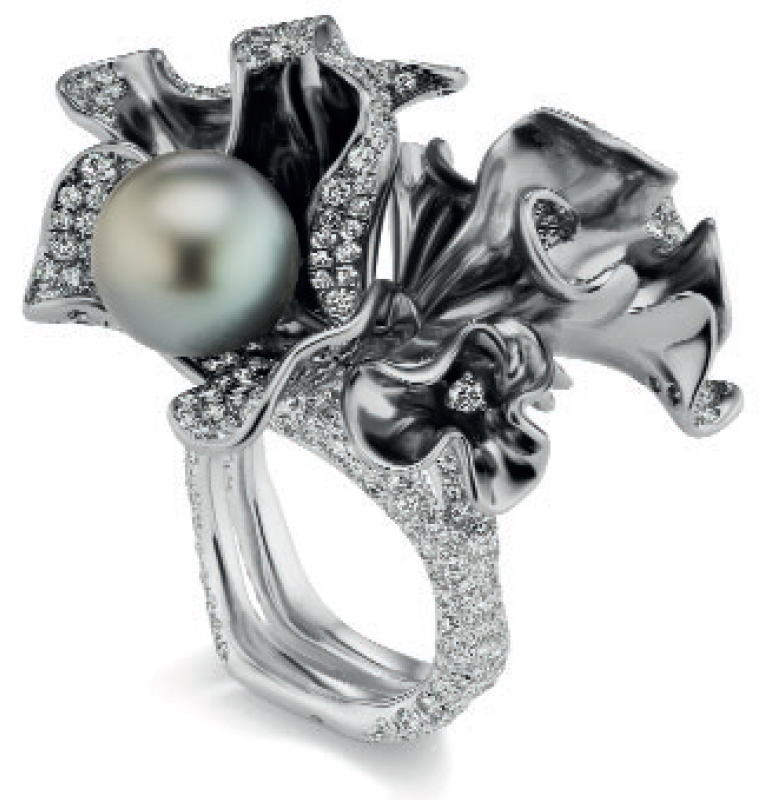WITH DIAMOND AND GOLD SEEING UP TO FIVE-YEAR LOWS IN NUMBERS, THE GEMS AND JEWELLERY INDUSTRY IS WITNESSING A MASSIVE SLUMP. THE GROWTH OF OTHER SECTORS, LIKE PLATINUM AND DIAMOND JEWELLERY, HAS ALSO BEEN AFFECTED BY ADVERSE SENTIMENT IN THE TRADE OVERALL. THE GOVERNMENT HAS BEGUN TO TAKE MEASURES TO BOOST EXPORTS AND SENTIMENT, BUT A LOT MORE NEEDS TO BE DONE
THE WORD ‘crisis’ has been used in many international reports describing the state of the global diamond trade in the past few months. Most of the cutting and polishing of diamonds takes place in India, and thus, any such slump in this business hits these family-run enterprises hardest. International reports say that demand for high-end jewellery has plateaued, leading to more supply than demand of polished stones. Gold is facing its own problems after the import duty hike from 10 to 12.5 per cent in July this year. Prices have been fluctuating unpredictably, and customer sentiment swinging along with them. There has been talk of companies closing shop, of job losses and a depressed festive season, traditionally the bumper season for the gems and jewellery trade in India.
The Gem and Jewellery Export Promotion Council (GJEPC) has sharply increased its policy representation to the government at a time like this. Some sectors, like platinum and diamond jewellery, have not been affected as badly, but a slump in the sector overall has a negative effect on growth across the board. And also from across the board comes the opinion that there is a lot the government could do in terms of taxation and regulations to ease doing business, improve sentiment and boost exports.
Thanking the government for the recently announced policies for the gem and jewellery industry, Pramod Agrawal, Chairman, GJEPC, said, ‘We have a goal to achieve – taking gems and jewellery exports to $75 billion and creating additional employment of 2 million by 2025. I would like to thank the government for giving the industry the required impetus by announcing a slew of trade-friendly policies recently. These policy reforms have given some much-needed relief to the industry. They will help boost exports from the country. However, the GJEPC will continue to work with the government on policy issues that need immediate attention. These include measures like the reduction of import duty on gold to 4 per cent and the need for formulating a gold policy for the industry – this will make the sector more organized.’
Also lauding the government’s measures is Sabyasachi Ray, Executive Director, GJEPC. ‘The US market is looking good, and in our opinion, it will see an uptick during Christmas, which is good for diamond jewellery. But the Chinese market is not looking good. The Hong Kong show was affected by domestic political upheaval there, and all of this will affect the Chinese market further. Roughly 26 per cent of the global demand for diamonds comes from China. So whatever gains we make from the revival in the US market will be offset by China. Plus, there is negative sentiment affecting the industry as a whole. If there is no turmoil in oil prices and everything in that area remains stable, then I think the gold jewellery exports is expected to remain stable too. There is a decline in exports of 5 to 10 per cent and if that is maintained, if it doesn’t worsen, I’ll be very happy.
‘On the government reforms and economic measures, I would have to commend them for taking a longterm view. These measures will eventually prove to be very good for the industry.
‘As you know, most people do not buy jewellery without seeing it for themselves. Similarly, products have to be exhibited abroad for the purpose of sale and they have to be taken outside for exhibitions. Resolving the issue of tax notices to manufacturers taking items outside the county for exhibitions and then bringing them back, and removing IGST (integrated goods and services tax) on such items, including restart of replenishment of inputs, will help to boost exports.’
DIAMONDS
International market reports on the diamond business streams in August and September are not optimistic. The seasonal surge in sentiment and sales ahead of the Dhanteras/Diwali festive season has not happened on quite the same scale. Manufacturing is low, since supply is still greater than demand. The volatile and dispirited diamond market seems to have pushed some manufacturers in India towards lab-grown diamonds to stay in business.
State of the sector
Colin Shah, Vice-Chairman, GJEPC, is not positive about the state of the industry. ‘The state of the industry is not positive – we are at a five-year low in exports. Globally, the US is steady; in Europe, brands are doing well but non-brands, not so well; Chinese demand is down due to the protests and the trade war; the Gulf is in recovery in the long term; and in India, we have our own challenges. Our top four markets are the US, China, the Gulf and India. With China and the Gulf down, you can imagine what the struggle for exporters is,’ he says. ‘Our industry has been on a declining trajectory in the last 18 months, from about the time of the Modi/Gitanjali revelation. Credit availability is down; duties are up; there is the high cost of capital; the GST blockage of capital; low ease of business in terms of customs; and challenges with taxation.’
What the government can do
Says Shah, ‘If we are serious about the export industry, we have to compete with China, Thailand, Vietnam and Indonesia. We can’t compete with these countries on ecommerce, customs duties, and credit availability. We need radical action on policy, a progressive SEZ policy and rationalization of duties. Every sector is facing challenges, including ours. For instance, we don’t have an e-commerce policy – we can’t ship a single piece internationally. So we can’t implement the basics – going digital, Make in India… If the industry has to recover from this slump, the government will have to focus on this and take it seriously. Logistics and export–import have to be seamless. Every country has taken leaps in these areas, we haven’t. There is a lot of talk about these things, but no action on the ground. Of course, demand is low all over the world and there is a recession, but policy is the crux in our context.’
‘As for what we, the industry, can do, we are holding more buyer–seller meets; more interactions; aggressively promoting and marketing diamonds and jewellery – in short, making a greater effort in marketing. We are representing our policy issues to the government too, very, very frequently,’ says Shah.
GOLD
State of the industry
Gold is facing domestic challenges and needs greater attention from the government, says K Srinivasan, Convener, Gold Jewellery and Other Precious Metal Jewellery Panel, GJEPC. ‘The state of the gold sector is not positive at all. The challenges we are facing are an abnormal increase in the gold price, disparity in the official and unofficial market because of the duty hike, and the general impact of the recession and business being low,’ he says.
Somasundaram PR, Managing Director – India, World Gold Council, lays it out in detail. ‘In July, the import duty on gold was increased from 10 per cent to 12.5 per cent. Customers do not see import duty on the invoice – they only see the GST of 3 per cent – so this has been passed off as an increase in gold price. The price rise due to international factors in the past few months has been around 18–20 per cent, so an impact of 2.5 per cent did not stand out. Gold prices have already risen so fast this year that with this duty hike, we have the rupee price of gold at a lifetime high, nearing `40,000/10 grams. This has impacted gold demand. While the wealthy and high-end consumers were not affected, the hit is being faced by lower income families who have to buy gold for weddings. This could have other repercussions as well, like an increase in the grey market.
‘Before the increase in duty, the general understanding was that compliance in the industry post-GST introduction was improving and the industry was getting more organized. This trend is likely to be disrupted on account of two reasons. One, consumer resistance to higher prices and the lure of the grey market. So compliant, organized players will now lose ground to an active grey market, which is not healthy for the economy. While surveillance has improved post-GST, the grey market is innovative and is a threat to gold reforms.’
Outlook
‘In a peculiar way,’ says Somasundaram, ‘this would actually bring consumer interest back to gold. The rise in gold prices reinforces the faith of families in gold as long-term protection – the price rise following the import duty hike only adds to this argument. So, at the next opportunity, when there is a drop in price due to international factors or rupee strengthening, or if the current price sustains till Diwali, giving consumers confidence that the price increase is not a blip, we will see increased buying. It appears – perhaps it is also a concern – that demand will grow significantly this year as in 2013, since gold has emerged as the most attractive asset class in 2019.’
However, Srinivasan asserts, ‘My outlook is that things will improve only if the government addresses some of these issues. They are giving no importance to this sector; it is a dying sector. Gold price has to come down drastically, otherwise the festive season will be a total fail.’
What the government needs to do
Says Srinivasan, ‘The measure sorely needed is that the government support the organized industry and take action against the unorganized sector.’ Somasundaram adds, ‘The government should announce a comprehensive gold policy to enable long-term investments and FDI in the gold sector. Such a policy can always accommodate duty hikes based on certain economic triggers rather than as kneejerk reactions. This will enable the industry to expect and navigate such periods with caution and in a planned manner. Other policy recommendations such as spot gold exchange, mandatory hallmarking, good delivery, revitalized GMS and export thrust, which were covered in NITI Aayog’s Watal committee report on transforming the gold industry, should be implemented step by step. This will inspire confidence. Else, there is a threat of losing the advantage of compliance built over the last few years to the disruption and indiscipline of an active grey market.’
DIAMOND JEWELLERY
Sachin Jain, President, Forevermark India, says, ‘Speaking only on the domestic consumption of diamond jewellery – the state of this sector is not at all negative. There is a constant growth in the inclination of the Indian customer towards diamond jewellery over just gold jewellery. But of course, the two go together, and any impact on gold and gold prices on account of sentiment does affect the diamond jewellery sector as well.
‘However, the year started quite well; we had a great first quarter. In the second quarter, there was substantial fluctuation in gold prices; there was the duty hike; and the jitters indirectly impacted the diamond jewellery segment as well. There is a lot of inconsistency in the price of gold, obviously.
‘However, selling is smooth and positive across even tier II and tier III cities. Evolving customer choices; changing mindsets; affordable products and the prevailing trends mean that demand for diamond jewellery domestically is positive. My mid-term perspective is that nothing is going to change – the fundamental demand for diamond jewellery is here to stay.’
PLATINUM
Outlining the state of the platinum sector, Vaishali Banerjee, Managing Director – Platinum Guild International – India, says, ‘Platinum jewellery retail growth has reported consistent growth over the last four years. According to our Retail Trade Barometer 2018, retail growth is reported to be at 20 per cent all India and this year, we have seen similar growth in H1.
‘However, for platinum to realize its full potential, the overall industry needs to be robust and growing. For retailers and manufacturers, platinum is a niche and a growing category that needs investment from them. This is possible only if the overall industry is healthy and strong.
‘PGI India works with only organized retail and today we are present in over 1,300 stores across regions in India. The platinum growth in India is led by larger retail chains. The impact of the slump is lower on platinum because it is more affordable and talks to the younger consumer. However, once the industry recovers, platinum growth will be more robust.’
Outlook
Says Banerjee, ‘Jewellery is a discretionary purchase, and we will need consumer sentiment and confidence to improve for the platinum business to thrive. We expect the market to grow at 15-20 per cent, but it will be skewed in favour of the large retail chain stores.’
What the government can do
‘The Indian platinum jewellery industry has huge growth potential, both for the domestic and the export market,’ says Banerjee. ‘Platinum has also created additional employment opportunities for the artisans as platinum jewellery needs very skilled karigars to work on it. In order to cater to this potentially high growth rate and the increasing demand of platinum jewellery in India, which will create additional employment, it is critical that the government eases facilitation for seamless importation of platinum into India. At present, the regulatory framework does not permit the import of platinum by nominated banks on an unfixed price basis. There was a licence which was withdrawn in 2013 and was never reinstated, impacting manufacturers’ investment in the category, given their exposure to price volatility. Limited investment will limit the growth of the platinum jewellery business as consumer demand grows.
‘Also, there is no duty drawback for manufacturers exporting platinum jewellery, which is restricting manufacturers from offering competitive prices against international competitors, which is resulting in a loss of business.
I would like to thank the government for giving the industry the required impetus by announcing a slew of trade-friendly policies recently. These policy reforms have given some muchneeded relief to the industry. They will help boost exports from the country. However, the GJEPC will continue to work with the government on policy issues that need immediate attention
Pramod Agrawal,
Chairman, GJEPC
‘Therefore, we need policy support from the government that facilitates future growth and strengthens the Make in India initiative of the government.’
REASSURANCE AND TRANSPARENCY VITAL TO REVIVING CUSTOMER CONFIDENCE: DPA
Richa Singh, Managing Director – India, Diamond Producers Association (DPA), says that customer curiosity is now down and the right communication could help in turning things around. ‘While sentiment has been muted, we believe that consumers continue to be curious about diamonds. It is only a matter of time before the market gains momentum and consumers show an increased interest in diamond jewellery purchase. Reassurance and transparency are vital to boost their confidence. If retailers are transparent in their communication, they will be able to win consumer confidence and trust,’ she says.
They have also stepped up innovation in their communication and marketing, which is pro-natural. ‘As the DPA, we want to be the unbiased and credible source of all information pertaining to diamonds. With an overarching theme of building a positive sentiment for naturality, we follow a two-pronged approach for diamond promotion. For consumers, we create thirty pieces of original content every month, which focus on building aspiration for diamond jewellery as well as diamond-centric education, by making them aware of interesting facts about natural diamonds. For trade, we have tried to create platforms where they can showcase diamonds to consumers, like we do through our association with Lakmé Fashion Week. Besides that, we offer customized content for circulation among their consumers around diamond education, and we also share relevant information which can help them build a pro-natural narrative and answer any consumer queries that come their way,’ she says. –




